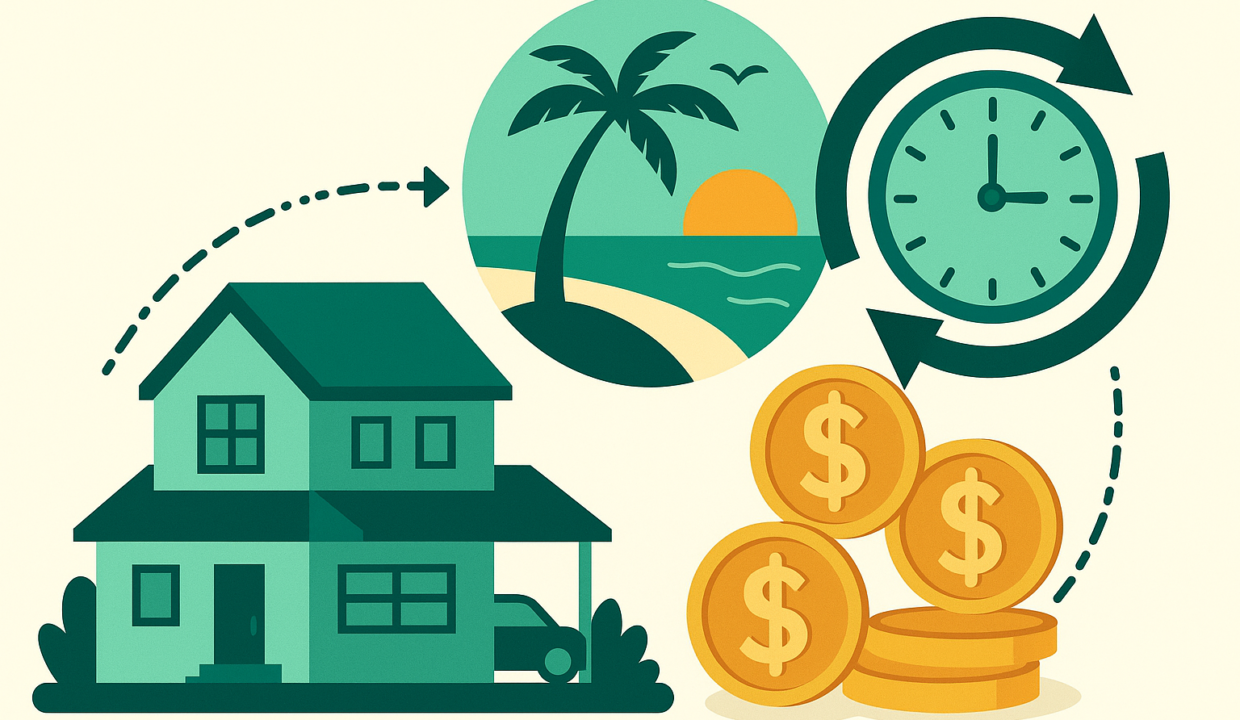
Paying for your property with rentals is a smart strategy for those who want their investment to work for them. Whether through vacation rentals or long-term rentals, this formula can significantly reduce the time a property “pays for itself” if you apply the right strategies.
How to pay for your property with rentals: vacation rental approach
Vacation rentals exploit high seasons, attracting tourists and short stays. Therefore, it can generate high revenues in short periods of time. However, it requires more management, continuous attention and high variable expenses. In addition, competition can be high in certain areas.
- Pros: High seasonal income, flexibility of personal use, possibility of dynamic adjustment of rates.
- Cons: Empty in low season, maintenance costs, guest management, frequent cleaning, wear and tear on furnishings.
How to pay for your property with long-term rentals
In this model you get a constant flow of rent month to month with less tenant turnover. This provides stability and lower operating expenses, although income tends to be lower than in vacation rentals. However, it is ideal if you do not plan to visit your property frequently.
- Pros: Stability, lower turnover, more controlled maintenance, less daily effort.
- Cons: Lower monthly income, fixed contracts, risk of non-payment if you do not vet your tenant, less flexibility for personal use.
Which properties work best and how I help you choose
There is no one-size-fits-all recipe. That’s why my job as a consultant is to help you find the ideal option according to your budget, goals and lifestyle. There are apartments near the sea with high tourist demand, although they tend to have a higher price. On the other hand, consolidated residential areas also offer good returns, attracting both locals and foreigners looking for a quieter life.
Villas, for example, tend to attract a more affluent market and, while they require more initial investment, can generate better returns. My advice is to review with you what type of property, location and rental strategy best fits your plans.
In which areas in the Riviera Maya are you most likely to succeed?
Areas such as Cancun, Playa del Carmen, Puerto Morelos and Tulum are in demand for both vacation and residential rentals. Therefore, having a property with an accessible location in these areas increases the possibilities of occupancy and return.
Expenses to consider when thinking about how to pay for your property with rents
Includes general maintenance, utilities (water, electricity, internet), taxes, insurance, administration, furniture and periodic replacements. In vacation rentals you should also consider frequent cleaning, change of linen, marketing and platform commission. Having clarity in these expenses is vital to calculate your return.
Estimated time for the property to pay for itself
With a good level of occupancy, you could amortize your property between 5 and 12 years. But you can reduce this time by increasing income, reducing costs and choosing the right location and type of property. In addition, professional management greatly optimizes performance.
Strategies to reduce the payback period
Some strategies that work very well are: choosing emerging locations, optimizing prices according to the season, offering additional services, promoting on multiple channels, having an updated calendar and providing a differentiated experience. In this way, you will maximize revenue and reduce the years needed to recover your investment.
Properties listed in key areas in the Riviera Maya
To see real examples and explore concrete possibilities, you can review properties in these locations:
- Properties in Cancun
- Properties in Playa del Carmen
- Properties in Puerto Morelos
- Properties in Tulum
Do you want to know how to pay your property with rents in a strategic way?
If you are ready to get started, I can help you project your income, compare areas, review specific properties and define a clear investment plan. Contact me now for a personalized consultation. Together we can turn your property into a real source of income.
